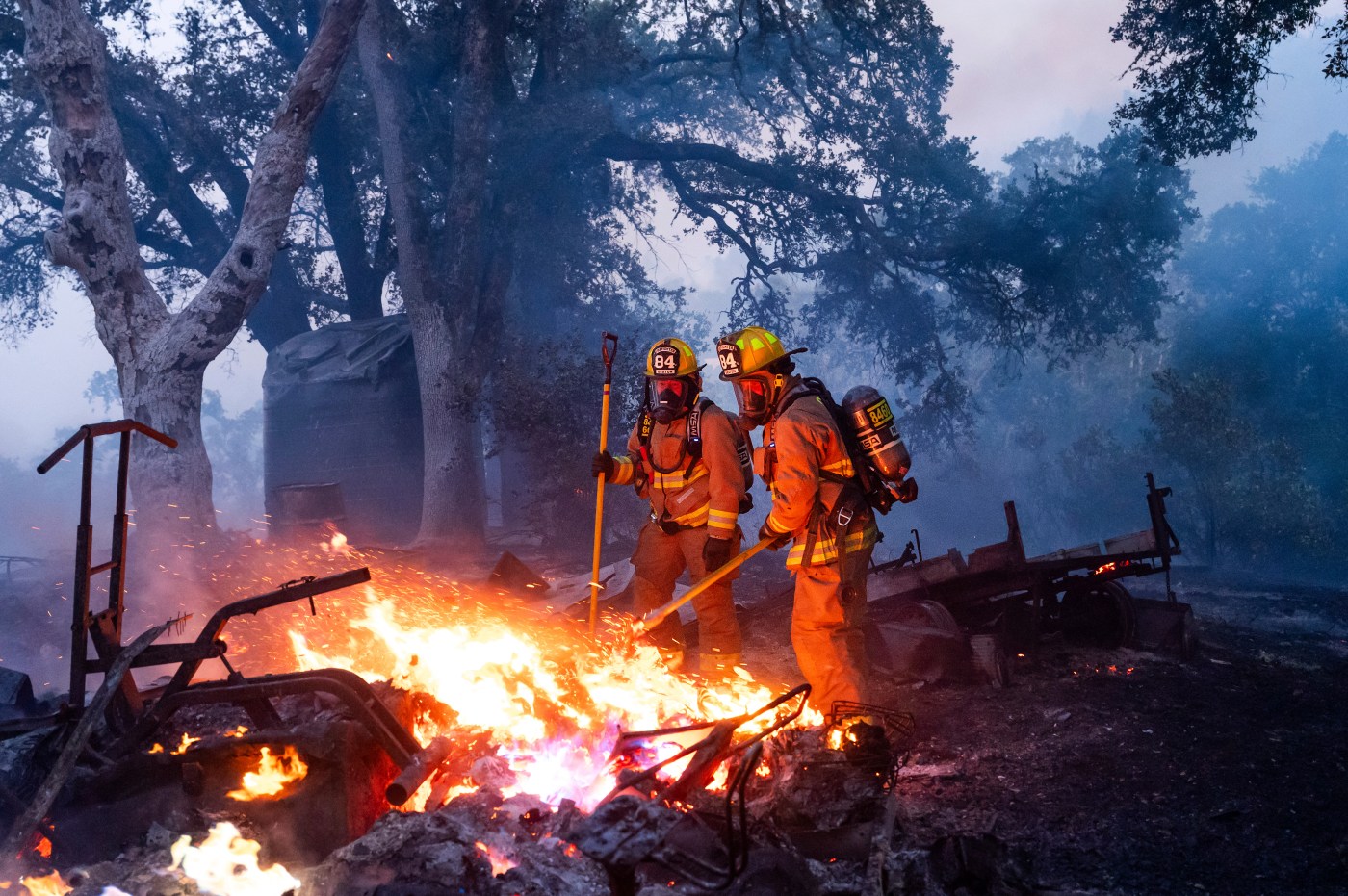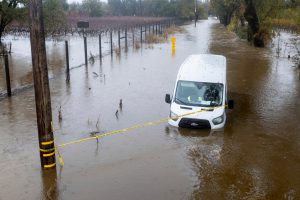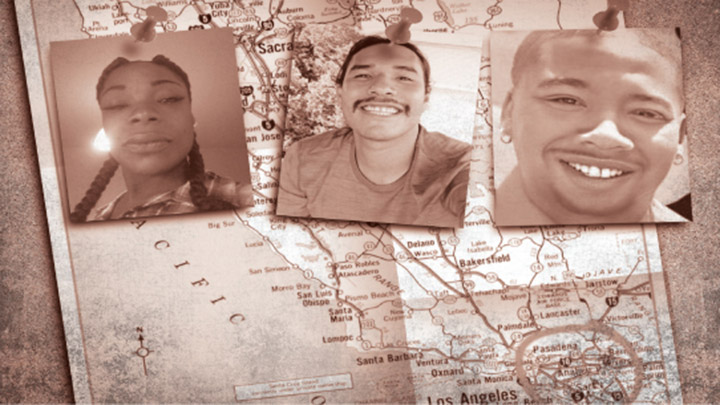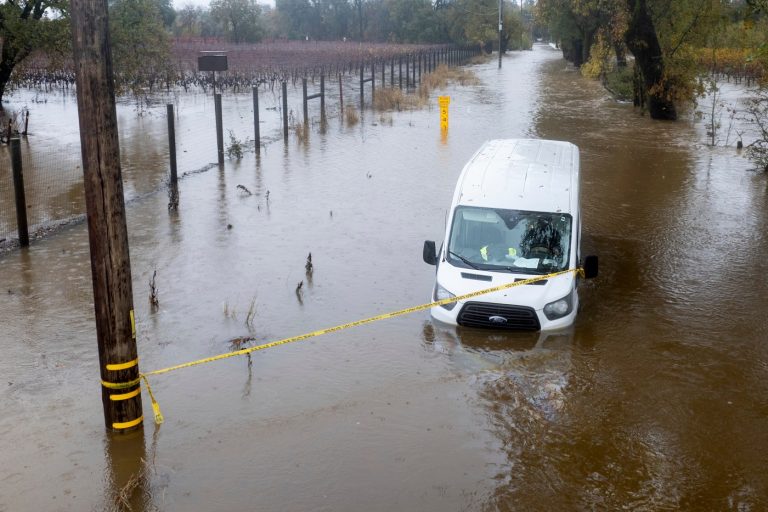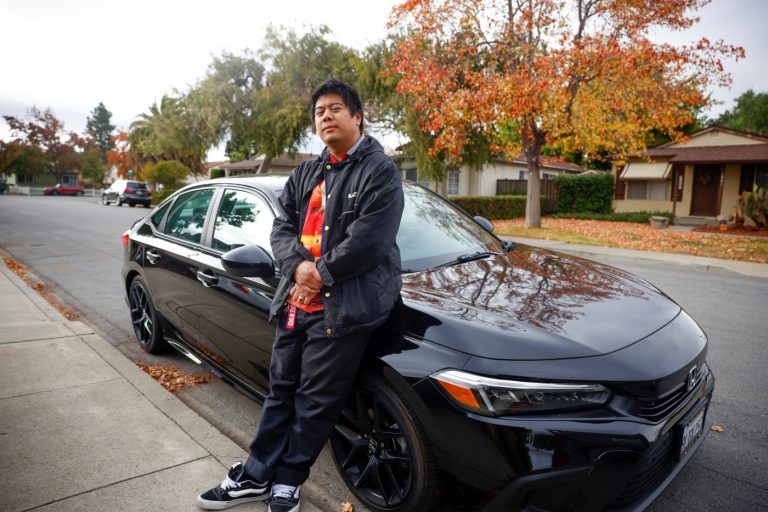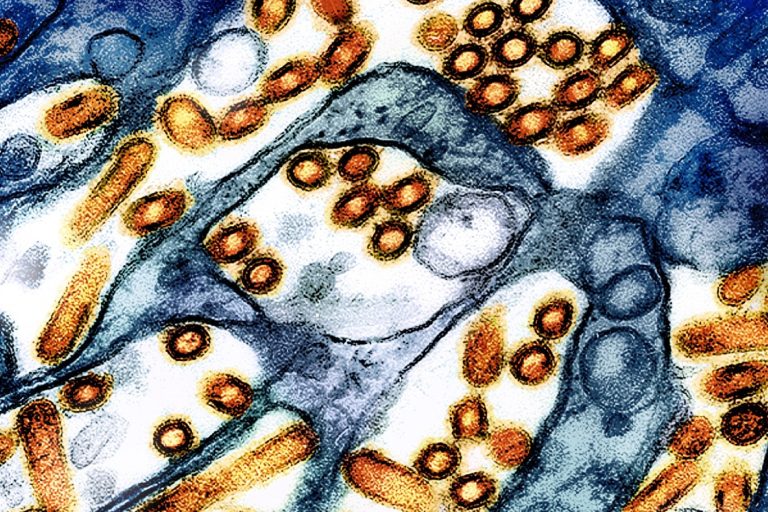California firefighters were battling raging blazes from Redding down to Indio on Tuesday as dry, sunny weather and wind combined with plentiful dried vegetation to create ideal conditions for wildfires to start and spread.
For the first time in two years, Cal Fire activated its highest-level incident-management teams for three of the fires: the 10,000-acre Sites Fire northeast of Clearlake, the 5,400-acre Aero Fire in the foothills east of Stockton, and the 15,700-acre Post Fire in southern California.
“To have three activated this year already in quick succession of one another is significant,” said Cal Fire spokesman Isaac Sanchez. “It’s indicative of what we’re facing right now. The conditions are ripe for large fires to impact communities.”
Two wet winters in a row and the end of drought conditions have allowed grass to grow thick and high in many areas of the state. “It’s like gasoline, it burns very quickly, it burns very intensely,” Sanchez said.
California’s fire season exploded at the start of this month with the 14,000-acre Corral Fire near Tracy. By this time last year, the state had seen only one wildfire bigger than 1,000 acres — this year, there have been 14. As of Tuesday afternoon, Cal Fire crews across the state were fighting 11 wildfires of 300 acres or more.
Dangerous fire conditions began sweeping over the state Friday when a dry, low-pressure weather system started to settle in, bringing winds and low humidity levels that made fire ignitions more likely and helped existing fires spread, said Brent Wachter, a fire meteorologist for the U.S. Forest Service. Windy conditions from the trough peaked Sunday and Monday, while “unseasonably low” humidity took hold Monday and Tuesday, Wachter said.
Sunshine, too, contributed to the volatility of wildfires over the weekend and into the start of the week, Wachter said. The intense rays create air movement that can push drier air down toward burning terrain, Wachter said.
“That really helps fires propagate,” he said.
Wafting smoke from northern California wildfires led the Bay Area Air Quality Management District on Tuesday morning to issue an air-quality warning for the region through at least Wednesday.
“Expect smoky, hazy skies and the smell of smoke outdoors,” the agency said, adding that the air outside could be unhealthy for sensitive groups.
Two Northern California blazes that ignited Monday spread extremely quickly — as the Corral Fire had — torching nearly 5,000 acres in a matter of hours. The Aero Fire in the foothills east of Stockton pushed emergency officials to order evacuations in nearby Copperopolis and by Tuesday afternoon had blackened 5,425 acres and was 20% contained. The area had not seen a large fire since 2003, and flames were consuming grass and oak woodlands, Cal Fire said.
“It was very ferocious. It looked scary,” said Larry Aderman, owner of Frog’s Tooth Winery outside Copperopolis, who was evacuated Monday evening. “The flames were easily 100 yards going up in the air.”
The Sites Fire that started Monday in Colusa County consumed 10,000 acres and by Tuesday afternoon was 15% contained by 12:30 p.m. Tuesday, up from 0% containment three hours earlier.
The 1,200-acre Point Fire that started Sunday near Healdsburg in the Wine Country was 40% contained by Tuesday afternoon. Cal Fire said two structures burned and a firefighter was injured fighting the fire and taken to a hospital. Evacuation orders affected nearly a dozen wineries in the Dry Creek Valley and Healdsburg areas.
“We made really great progress on that one overnight,” Cal Fire spokesman Will Powers said Tuesday.
Lauren Fremont, executive director of Winegrowers of Dry Creek Valley, said Tuesday that some vineyards on the north side of Dry Creek Valley were affected and a couple of road closures were still in effect. But it seemed to be business as usual at most of the wineries in the valley where the smoke was barely noticeable. Ferrari-Carano Winery, which was in the evacuation zone, reported Monday night that “our team, vineyards, and winery are currently safe.”
“It’s a big relief for the wineries and the land that’s there,” Fremont said.
In Butte County, the Junes Fire that started Saturday had burned 1,056 acres by Tuesday afternoon and destroyed one structure but was 98% contained and not spreading. Full containment was expected by the end of Tuesday, according to Cal Fire.
Cal Fire’s Santa Clara Unit, which covers Santa Clara, Alameda, Contra Costa and western Stanislaus and San Joaquin counties, sent five-engine “strike teams” to the Aero and Sites fires, said Cal Fire spokeswoman Chelsea Burkett.
Related Articles
Aero Fire map: Evacuation ordered as wildfire nears Copperopolis
Opinion: California governor and commissioner push to raise insurance prices
Elias: California insurance chief giving in to the industry’s demands
Post Fire map: Evacuation expanded for biggest wildfire of California’s season
Power demand expected to double by 2040 thanks to AI and EVs, PG&E’s CEO says
Although some of the vegetation in burning areas, including oaks, was not as tinder-like as the state’s grasses, close proximity to flames can make it flammable so “the fire continues to burn and spread,” Burkett said.
The largest fire of California’s season so far, the Post Fire in Los Angeles and Ventura counties, had burned 15,611 acres as of Tuesday morning. The blaze, which started Saturday afternoon in Gorman, was 24% contained Tuesday afternoon. The area remained under an evacuation order that expanded to the south, past Pyramid Lake, and Cal Fire said the fire continued to burn in that direction.
However, fire weather in California is expected to start relenting Wednesday and help firefighters, Wachter said. Winds began dying down Tuesday afternoon, giving way to localized breezes through at least Friday, and humidity levels were expected to start rising incrementally Wednesday through at least Saturday.
The drop in wind will be a key factor in battling the fires, Wachter said.
“Wind is king,” he said. “It always is.”
